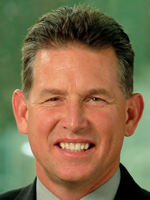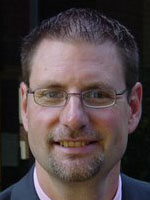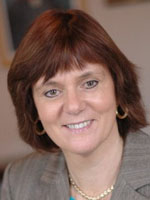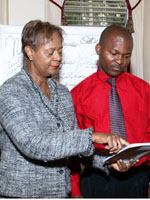Does your board spend enough time thinking about fundraising?
"We spend most of our time worrying about money!" some board members reply.
Worrying is not a strategy, though -- and it doesn't raise any money, either. A school's board needs information, wisdom, courage, and faith to undertake the kind of financial strategizing that leads to effective fundraising. One critical aspect of the information board members need is knowledge about current trends in fundraising, and how they are affecting schools of theology.
Six recent trends that affect development strategy at theological schools include:
-
Increasing attention to megagifts.
-
The place of planned giving in an institution's development strategy.
-
The importance of finding, training, and retaining development staff.
-
Donor fatigue, donor retention, and new donor creation.
-
Shifting trends in denominational support.
-
The development of online giving.
The importance of the megagift
 |
"Substantial gifts come only when you are able to spend a great deal of time building relationships."
David Bixby, Executive Vice President for Advancement, Azusa Pacific University
Education and general budget for Haggard School of Theology: $3,915,000
FTE faculty: 32
FTE enrollment: 203
DATA: ATS FACT BOOK
(AZUSA PACIFIC UNIVERSITY)
|
Record-breaking gifts are dominating today's philanthropic news. It will be a long time before anyone surpasses Warren Buffett's $31 billion gift to the Bill and Melinda Gates Foundation, but sometimes it seems as though multimillion-dollar gifts are being announced every few months. Nonprofits are receiving an increasing number of "stretch gifts," encouraged in part by the Pension Protection Act of 2006, which allows older people to make tax-free donations of up to $100,000 directly from Individual Retirement Accounts. Theological schools have received some of their largest donations ever within recent years. The 20/80 rule of thumb for capital campaign fundraisers (20 percent of the donors contribute 80 percent of the money), may be shifting toward 10/90 or even 5/95. Anthony Ruger, senior research fellow at the Auburn Center for the Study of Theological Education, reports that in the five-year period ending in 2003, 83 percent of gifts from individuals came in the form of gifts and bequests of $5,000 or more. And in the years since 2003, megagifts have pushed those numbers higher.
However, fundraisers, administrators, and trustees need to know that megagifts require megatime and megaeffort. "It's important to remember that substantial gifts come only when you are able to spend a great deal of time and effort building relationships with donors," says David Bixby, executive vice president for advancement at Azusa Pacific University in Azusa, California, which includes the Haggard School of Theology. "Everyone has heard an amazing story about someone giving a huge gift after one visit, but the fact is that it takes quite a period of time to make someone fall in love with your institution."
June Costa is vice president for institutional advancement at Shaw University, which is in Raleigh, North Carolina, and is home to Shaw Divinity School. She, too, speaks to the importance of taking time to develop relationships in acquiring a megagift. In 2007 Shaw University received $5 million for scholarships from John and Christy Mack, who had become well informed about the school's mission, goals, and accomplishments during the previous four to five years. "People who are in a position to make substantial donations are smart," Costa says, "and they want to be sure that your institution is worth a major investment."
"Big donors know all the right questions to ask," says David Bixby of Haggard School of Theology. "Among other things, they want to know the percentage of giving among the institution's alumni, faculty, and trustees -- and what the total amounts for these groups are."
Heather Cooke, director of finance, administration, and development for Queen's Theological Collegeat Queen's University in Kingston, Ontario, reports that faculty and staff giving at the school is currently at an impressive 75 percent level, through a paycheck debit plan. At board level, the numbers are slightly higher -- 78 percent. She, too, stresses the importance of healthy donor levels among board, faculty, and staff as a prerequisite to attracting major gifts. Board members who want to see their school's development office bring in substantial gifts need to be sure that board members' giving (both in absolute dollars and in percentages) reflects the type of commitment that major donors expect.
TAKEAWAY LESSON FOR BOARD MEMBERS
Increasing importance of megagifts
Major donors look hard at the board's level of giving. Has your board set goals for its own giving (both in dollars and in percentages)? Are your board members providing links between major donors and the school's development team? Has the board established a development subcommittee to work in a focused way on fundraising, including potential megagifts? (See "Synergy: Working Together to Bring in the Money" beginning on page 12 in this issue.)
Planned giving -- big numbers, high hopes
One area that fundraising professionals are concentrating on in the search for gifts (both mega and modest) is planned giving. Some experts estimate that, over the next 50 years, between $41 trillion and $136 trillion will pass from one generation to the next. This wealth will go to heirs, charities, taxes, and other recipients -- and fundraisers are looking for ways to ensure that their institutions are among the beneficiaries.
As with megagifts, successful planned giving programs require significant time and preparation on the part of development and advancement staff. Heather Cooke, at Queen's in Ontario, just completed the Canadian Gift Planning Course, in which she learned how best to talk to potential donors about estate planning. "The school knows that education is essential. Estate planning is complex, and we must be sure that all our conversations with donors are accurate and ethical."
 |
"Planned giving is the future of the financial health of any institution."
Ken Neevel, Vice President of Advancement and Communications, Western Theological Seminary
Education and general budget: $8,237,000
FTE faculty: 16
FTE enrollment: 174
DATA: ATS FACT BOOK
(WESTERN THEOLOGICAL SEMINARY)
|
"Planned giving is the future of the financial health of any institution," says Ken Neevel, vice president of advancement and communications at Western Theological Seminary in Holland, Michigan. "It requires a good bit of education for both fundraisers and for donors, and when that education happens in the right context, planned giving fits very well with fundraising for seminaries." He notes that the typical donor to Western is active in a local congregation and is a faithful tither. "Our donors understand that giving money can be an act of faithfulness. And when we talk to them about tithing their estates, a light goes on.""Planned giving will be a key component of our upcoming capital campaign," reports June Costa of Shaw University. But, she cautions, the groundwork must be prepared carefully. "Board members need to realize that planned giving is a long-term commitment, and that institutions must develop budgets to carry the salaries of the people who work on it. You can't have a successful planned giving program without a strong staff."
TAKEAWAY LESSON FOR BOARD MEMBERS
Planned giving must be a priority in long-term fundraising goals
Does your school have a strategy for planned giving? What percentage of board members, staff, and faculty have made provision for the school in their estate planning? The board must lead in this area.
Staff -- finding and retaining the right people
In an article about nonprofit fundraising professionals, the Washington Post found that one of the biggest problems fundraisers face is insufficient staffing, and that staff turnover in the development office is a threat to the success of the organization. Development professionals working for theological schools are acutely aware that a critical factor in development success is finding and retaining the right people.
"I have been extremely fortunate in my staff," says Ken Neevel. "You have to start with people who love the church and the mission of the seminary, and they must have good people skills. I focus much less on looking for someone with past development experience, because that can be taught." David Bixby looks for people who are highly relational, and will be liked by donors. "Donors must genuinely like the people they talk to," he says. "Development officers must be credible, likeable truth-tellers -- and they must love the institution." He adds, "And it's crucial that they be people who know how to close the deal."
Nothing ensures longevity among staff like love for the job. Heather Cooke, who has been at Queen's Theological College for almost ten years, says, "I'm fortunate to have several roles. I'm the chief financial officer as well as the development person, and the breadth in my job description is very satisfying. Fulltime fundraising can be a burn-out job. It has been useful here for us to find ways to split roles among development staff, so that people get a chance to do some stretching in their professional lives, and try new tasks." She adds, "I like to build teams, and we have a great one."
TAKEAWAY LESSON FOR BOARD MEMBERS
Development staff need appropriate resources to accomplish the goals set by the board
Has the development office been provided adequate time, education, staff, and resources? Has the board considered asking the development office to make regular presentations to them, explaining goals, needs, successes, and plans?
Donor fatigue: stress and more stress
The international disaster relief community has been hit hard in the first decade of the 21st century, with earthquakes, hurricanes, and famines from New Orleans to Niger to Pakistan competing for public attention and charitable dollars. To their credit, faithbased organizations have been in the forefront of disaster relief. However, when funds are directed toward disaster relief, other causes may see a consequent downturn in dollars. "Donor fatigue is very much on our minds. People are being bombarded with requests to give," according to Ken Neevel.
One way of being mindful of donor fatigue is careful data collection, which many development offices see as essential in their efforts to avoid annoying the donors. "Good record-keeping is essential to ensure that we don't keep going back to the same people again and again, and that we know a potential donor's areas of interest," says June Costa of Shaw University. "You can't solicit blindly." Of course, data collection requires staff and resources -- and wise use of them.
Shifting trends in denominational support
Theological schools sometimes face a particular type of donor fatigue. It's not just individuals who are stressed by the increasing number of worthy recipients for their charitable dollars. Congregations and denominational bodies are also under great pressures. Loss of denominational support is particularly challenging for theological schools that have depended on it in the past, because that revenue is used in support of general operations, and because it was traditionally an "easy" source of dollars, requiring relatively little work on the part of the development office.
While it's true that denominational giving in actual dollars has, in many cases, increased over past years, often the dollars have not kept pace with other markers of financial health. As a percentage of seminary budgets, and sometimes as a percentage of denominational budgets, support can be lower even when the amounts stay the same or increase.
Development officers are acutely aware of the pressures facing congregations and denominations, and of the effects on their schools. "Forty years ago a large part of support for the school came from congregations. Today less than 10 percent comes from denominational sources," reports Neevel. This decline in denominational support has occurred even as enrollment at Western Theological has been thriving -- more than doubling in recent years.
In addition, the weakening of denominational ties, especially among younger churchgoers, is a reality for development officers at schools with ties to a specific denomination. People are finding ways to work in this new environment. "Congregations can be communication vehicles," says Neevel, "even though they are not donors to the school in the same ways as in the past. We send our message to individual donors through the churches. We know that people who care about the future of the church are donors; they want to know that there will be good church leadership for their children and grandchildren. So we still get strong denominational support, but the format has changed."
June Costa, at Shaw, is also seeing changes in the type of denominational ties people have to the school, and is working to forge ties with new donors. "Dr. [Clarence G.] Newsome, our president, asked me to come to Shaw to build a network of nonalumni supporters so that we don't keep going back to the same well so often. This led to an emphasis on community relations. We work not just with Baptist churches, but with all denominations and with local schools and community groups. The loosening of denominational ties can be viewed as a problem, or as an opportunity. We want to turn it into an opportunity.
"When we can get nonalumni to become donors, and to become fundraisers themselves, that's powerful. People see that they are willing to put their money and effort here, and that speaks volumes. We can reinvent ourselves by becoming more visible, and by partnering with new groups."
TAKEAWAY LESSON FOR BOARD MEMBERS
Patterns of denominational support are changing
If yours is a denominational school, how has denominational support grown or decreased over the last 20 years? How can your school best support its mission and history (whether denominational or not), and at the same time gain support among nontraditional constituencies?
Make new friends, but keep the old
 |
"We must be sure that all our conversations with donors are accurate and ethical."
Heather Cooke, Director of Finance, Administration, and Development, Queen's Theological College at Queen's University
Education and general budget: $1,953,000
FTE faculty: 13
FTE enrollment: 66
DATA: ATS FACT BOOK
(QUEEN'S THEOLOGICAL COLLEGE)
|
A 2007 study sponsored by the Association of Fundraising Professionals showed the importance of focus on donor retention. In 2005, new and recaptured donors increased by 60 percent, but donor loss stood at 47 percent. Paulette V. Maehara, president and CEO of the association, says that "while reducing loss doesn't sound as exciting or optimistic a strategy as reaching out to new donors, it's clear that charities need to emphasize this critical but overlooked aspect of fundraising."
"Our donor base has not shifted much over the last 10 years," says Heather Cooke of Queens Theological College. "We add a few new alumni and friends each year. We realize that our donors are extremely valuable, and want to make sure they know they are appreciated. Donor retention is as important, or maybe more important, than acquiring new donors."
For June Costa, the history of Shaw Divinity School is key to understanding the traditional donor base as well as to attracting new donors. The tradition of the seminary as a school for black leadership increases the importance and value of a divinity school at a historically black university, and can be helpful in keeping old friends as well as attracting new ones.
"Shaw alumni, whether alumni of the university or of the divinity school, have a tremendous connection to this place. Maybe it's related to African-American culture and its strong connection to the church. Everyone knows the history of the institution, and the importance of the divinity school."
She adds, "When I was at Harvard, we did an experiment where we went out onto campus and asked students if they could direct us to the divinity school. No one knew where it was, and many did not realize there was a divinity school at Harvard. That would never happen at Shaw -- in many senses the divinity school is the heart of the campus.
"Many pastors of Baptist churches in North and South Carolina are graduates of Shaw, and so there's a great awareness of the importance of the school throughout the region. However, in recent years we have been seeing a paradigm shift -- as populations move around more, pastors of black Baptist churches are coming from other schools of theology. We're working hard to keep our ties to the churches strong."
TAKEAWAY LESSON FOR BOARD MEMBERS
Donor research, donor fatigue, and donor retention must be taken into account
Does the development office have adequate resources for effective data collection?
Online giving: If you build it, they may not come -- but you have to build it anyway
E-giving has begun to have an impact, and most trendspotters are predicting an increase in online, "click-and-mortar" giving. Most theological schools have some sort of online giving vehicle, but so far results have been tepid. David Bixby describes the effect of the creation of sites for online giving as the opposite of the baseball field Kevin Costner carved out of a cornfield in the film Field of Dreams: the site is built, but they do not come. At least, they don't come in the numbers you hoped for. That's too bad -- it would be nice if all development offices had to do to make the dollars roll in was to set up a page on the institution's Web site and let the computers count the funds as they pour into the electronic coffers.
On the other hand, most people think it is both necessary and useful for theological schools to make it possible and easy for donors to contribute electronically, because the world is increasingly comfortable with transacting business online. Bixby points out that Azusa alumni are enthusiastic about signing up and paying fees for alumni events online, and that the option of online donations may well become more popular in the future.
TAKE AWAY LESSON FOR BOARD MEMBERS
Online giving may become increasingly important
Does your school have a vehicle for online giving on its Web site? Have the board members used online giving at the school's Web site? It may be useful to ask each board member to give at least a nominal amount through the Web site, and report back with ideas on how easy/difficult/enjoyable the experience was.
Being relational
Trends may come and go, but some things never change. Fundraising will always mean people talking to people.
 |
"People who are in a position to make substantial donations ... want to be sure that your institution is worth a major investment."
June Costa, Vice President for Institutional, Advancement, Shaw University
Education and general budget for Divinity School: $1,476,000
FTE faculty: 14
FTE enrollment: 190
DATA: ATS FACT BOOK
SHAW UNIVERSITY
|
Face-to-face time with the president. "Major donors want to know the president," says June Costa. "All presidents of academic institutions spend a huge amount of time fundraising, and no president has as much time as he or she needs for this job. Institutional advancement staff must be very careful in how they carve out the president's time, because it is a precious asset."
Heather Cooke concurs. "You cannot do development without the principal. Our principal, Jean Stairs, is absolutely key to the success of development work -- she communicates her love for the school and the importance of the work being done here to everyone she talks to."
Influence of governance board members. June Costa reports, "Our board members are our best advocates. In 2006 we asked each member of the board to sign a promissory note to give or get $50,000 each -- and to date this effort has raised more than half a million dollars. Lorenzo Williams, the chair of the development committee of the board, is phenomenal. He's very busy, but always finds the time to work with us. Some of our board members worked with faculty and students on projects with underprivileged kids in Raleigh this summer, projects that raised the profile of Shaw in the community considerably. That's the kind of dedication our board members exhibit."
"People give to people. The circle of influence means something," says Ken Neevel. "One of our board members spends about a week each year (not all at one time) traveling with me to solicit people he knows. He can talk to people in his field in a way that I can't. The gift of his time and enthusiasm is invaluable to the seminary. It is absolutely critical that board members lead in the areas of fundraising and financial development."
Heather Cooke agrees. "The board at Queen's Theological College are well aware of their responsibilities both as donors and as connections with other donors," she says. "I'm always impressed with how they give of their time and money. In addition, they realize that we work well when we work as a team -- the board, the principal, and development staff. Our incoming board chair, Bruce Hutchinson, has already begun development discussions and is making plans for building a small working committee on major gifts."
David Bixby notes that board members shouldn't underestimate their ability to set up face-to-face meetings with significant donors. "When this is done appropriately," he says, "it removes a huge barrier to getting major gifts."
Meeting the students. Bixby also finds that students are among the most important fundraisers at Azusa. He invites potential donors to worship in chapel with students, to have lunch with them, and to talk to them. "When potential donors meet our students, they fall in love with the school," he says. "We ask students to share their experiences at Azusa, and they nail it for us -- their enthusiasm and love for the church and the school are contagious."
The widow's mite
As important as it is to anticipate future trends in fundraising, the ancient wisdom of Jesus' account of the widow's mite is still relevant. Everyone interviewed for this article was appreciative of smaller gifts as well as large. Heather Cooke recounted stories of Queen's Theological College alumni who never had large incomes, but nevertheless were able to make sustained faithful gifts throughout their careers. She likened them to her own father, an 89-year-old retired evangelical minister, who still manages to give nearly a quarter of his money to the church each year in spite of his very modest income. "Ministers have an incredible passion for giving," she says. "It's a privilege to work with clergy, with congregations, and with people of faith."